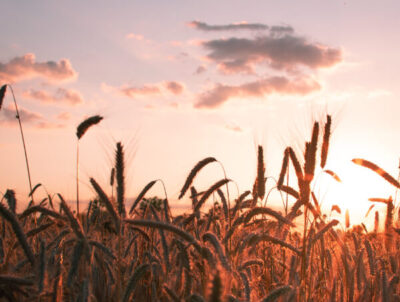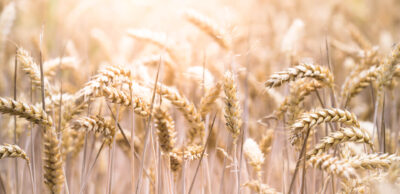A patent raw material
Especially in summer, Europe’s grain fields offer enormous ecological and economic potential – golden yellow bales of straw line the landscape everywhere. Every year, 20 million tonnes of straw are produced in Germany.
Most of it is reused in agriculture as fertiliser, 20 per cent remains unused – that corresponds to four million tonnes. These 4 million tonnes of unused straw alone store 10 million tonnes of CO2.
4 million tons of straw
-
Long-distance flights
This amount corresponds to the avoided CO2 emissions of 2 million long-distance flights from Germany to Australia.
+
New apartments
However, these 4 million tons of straw could also be used to build 400,000 housing units annually.
Straw as a building material would significantly reduce the burden on the building sector, which currently accounts for 30% of annual CO2 emissions in Germany. Straw is available without long delivery routes and creates climate-friendly and affordable living space.
With straw you can build ecologically sustainable buildings.

Relatively little energy is needed to produce the building material. This also applies to the other materials used in straw construction: Wood and clay. There are two types for straw construction: load-bearing or infill. In the latter, straw is pressed into wooden frames. This variant is the more common and can be compared with prefabricated construction methods.
Straw is an excellent insulating material for building renovation.

Straw can be processed in almost any way. As a result, a wide variety of insulation thicknesses are possible to meet different requirements. Compressed straw has excellent heat storage and sound insulation properties. The special feature is its regulating insulating effect. In summer, heat protection is thus also possible.

What else you want to know about straw construction:
Frequently Asked Questions
What needs to be considered when building with straw?
The most important thing – as with any project – is the planning details. As LORENZ assembly systems made of wood and straw can be fitted with cross bracing, stiffeners, load-bearing strips and milled grooves or openings ex works and according to customer requirements, it is advisable to know exactly how wall furniture (e.g. kitchens), wall brackets (e.g. for curtains) or electrical and water installations are to be fitted. The latter can be incorporated into the clay plaster, which is applied directly to the straw.
On the building site, care must be taken to ensure that the straw building elements or the shell are not exposed to moisture and humidity for too long.
What are the foundations of a straw building like?
The fact that point and strip foundations are possible may change the calculation of your building. It is important that the floor slab, which can be built with DD34 modules made of wood and straw, for example, is ventilated (keyword: moisture).
Is straw construction more expensive than with conventional materials?
According to calculations by architect Dirk Scharmer, deltagrün GmbH (2016), the costs of straw-insulated buildings were roughly equivalent to those of conventional buildings of medium standard with a similarly selected construction type. The market study “Straw-insulated buildings” carried out in the same year takes the following factors into account in the comparison:
– regional price differences
– Finishing and energy standard
– Year of construction
However: in recent years in particular, construction costs have risen by 5% more than the prices of LORENZ mounting systems, for example. It is not possible to predict how demand and the availability of raw materials will be reflected in future construction price trends. What can be assumed is that the CO2 balance, end-of-life costs and energy savings will have a more positive financial impact as a result of stricter environmental regulations or subsidies.
How are straw-insulated buildings treated in terms of fire protection?
In general, straw is a European-approved insulation material that can be used in timber constructions up to building class 5. The application must be considered on a project-by-project basis, which is why LORENZ provides technical support. Straw construction, like timber construction, is considered to be normally flammable.


